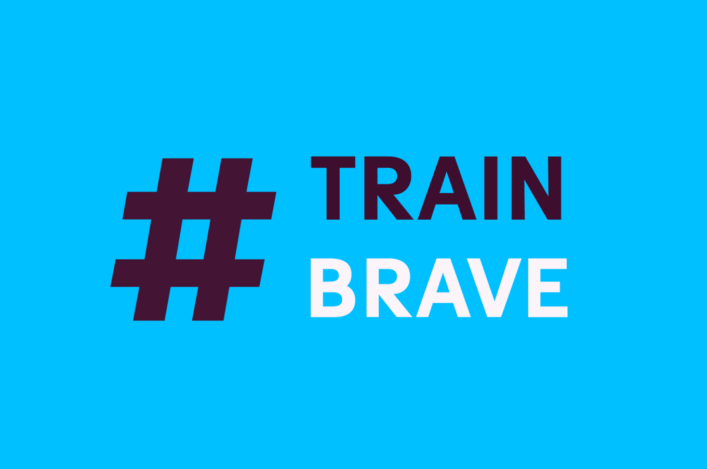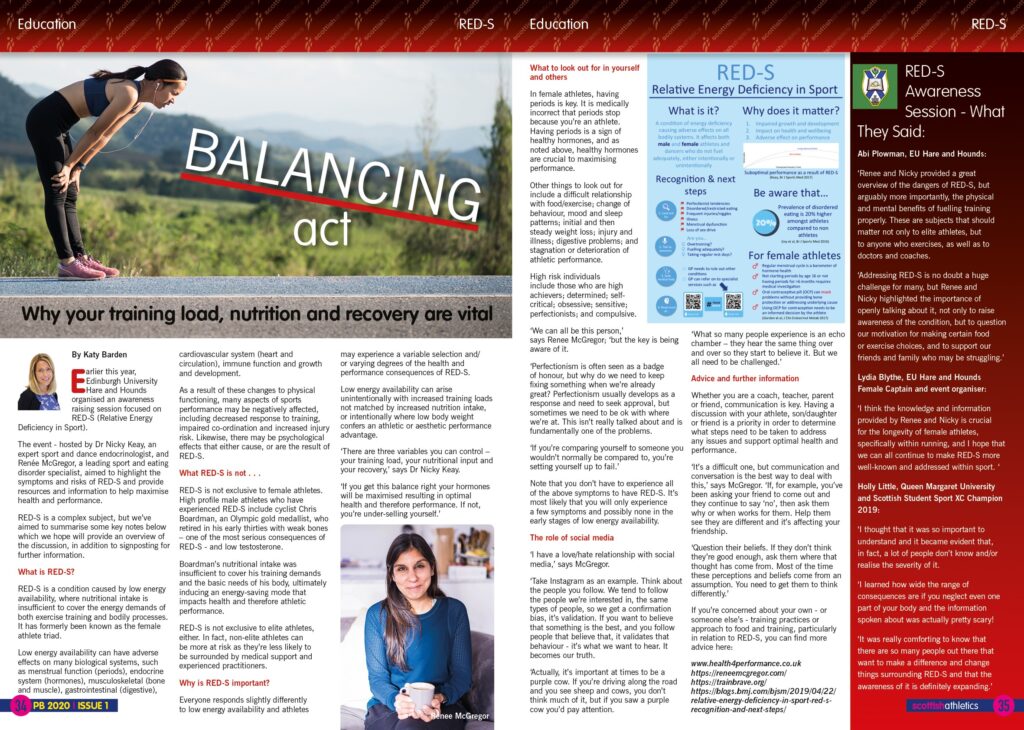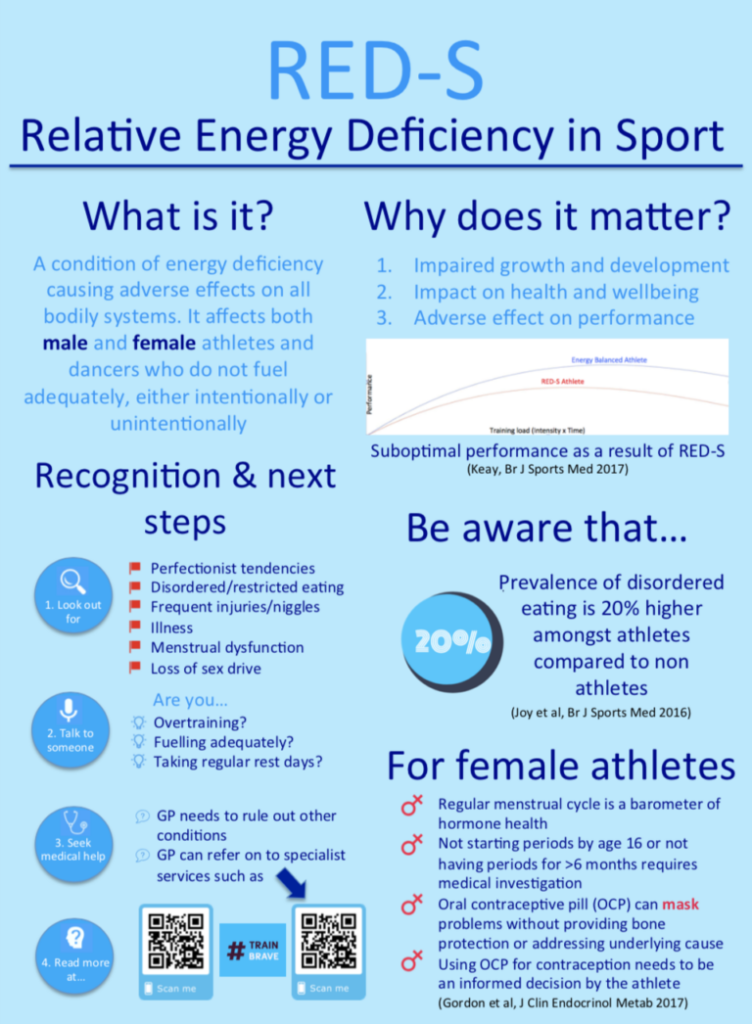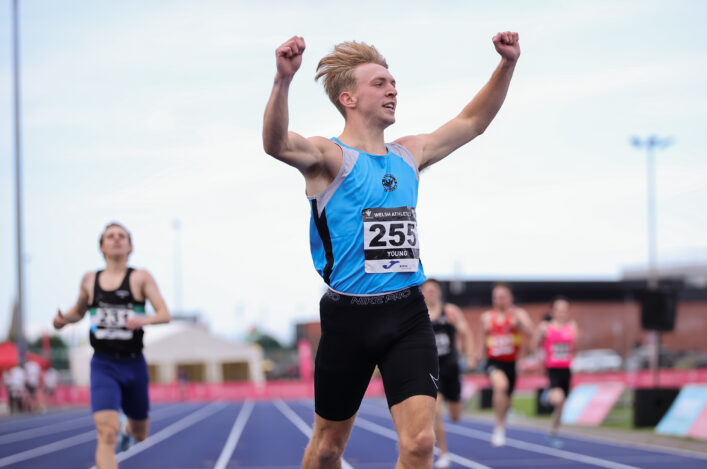RED-S: Learn more about Relative Energy Deficiency in Sport

By Katy Barden
Following the publication of a more detailed version of this feature in the March edition of PB, we’ve summarised below some of the key notes to come from the RED-S (Relative Energy Deficiency in Sport) awareness session organised by Edinburgh University Hare and Hounds earlier this year.
The event – hosted by Dr Nicky Keay, an expert sport and dance endocrinologist and Renée McGregor, a leading sport and eating disorder specialist – aimed to highlight the symptoms and risks of RED-S and provide resources and information to help maximise health and performance.
What is RED-S?
RED-S is a condition caused by low energy availability, where nutritional intake is insufficient to cover the energy demands of both exercise training and bodily processes.
It has formerly been known as the female athlete triad.
Low energy availability can have adverse effects on many biological systems, such as menstrual function (periods), endocrine system (hormones), musculoskeletal (bone and muscle), gastrointestinal (digestive), cardiovascular system (heart and circulation), immune function and growth and development.
As a result of these changes to physical functioning, many aspects of sports performance may be negatively affected, including decreased response to training, impaired co-ordination and increased injury risk. Likewise, there may be psychological effects that either cause, or are the result of RED-S.
Katy Barden’s article in the current edition of PB magazine
What RED-S is not . . .
RED-S is not exclusive to female athletes. High profile male athletes who have experienced RED-S include cyclist Chris Boardman, an Olympic gold medallist.
RED-S is not exclusive to elite athletes, either. In fact, non-elite athletes can be more at risk as they’re less likely to be surrounded by medical support and experienced practitioners.
Why is RED-S important?
Everyone responds slightly differently to low energy availability and athletes may experience a variable selection and/or varying degrees of the health and performance consequences of RED-S.
Low energy availability can arise unintentionally with increased training loads not matched by increased nutrition intake, or intentionally where low body weight confers an athletic or aesthetic performance advantage.
‘There are three variables you can control – your training load, your nutritional input and your recovery,’ says Dr Nicky Keay.
‘If you get this balance right your hormones will be maximised resulting in optimal health and therefore performance. If not, you’re underselling yourself.’
Renee McGregor
What to look out for in yourself and others
In female athletes, having periods is key. It is medically incorrect that periods stop because you’re an athlete. Having periods is a sign of healthy hormones, and as noted above, healthy hormones are crucial to maximising performance.
Other things to look out for include a difficult relationship with food/exercise; change of behaviour, mood and sleep patterns; initial and then steady weight loss; injury and illness; digestive problems; and stagnation or deterioration of athletic performance.
High risk individuals include those who are high achievers; determined; self-critical; obsessive; sensitive; perfectionists; and compulsive.
‘We can all be this person, but the key is being aware of it,’ says Renee McGregor.
Note that you don’t have to experience all of the above symptoms to have RED-S.
The role of social media
‘Think about the people you follow,’ says McGregor.
‘We tend to follow the people we’re interested in, the same types of people, so we get a confirmation bias, it’s validation. If you want to believe that something is the best, and you follow people that believe that, it validates that behaviour – it’s what we want to hear. It becomes our truth.
‘What so many people experience is an echo chamber – they hear the same thing over and over so they start to believe it, but we all need to be challenged.’
Advice and further information
Whether you’re a coach, teacher, parent or friend, communication is key.
Having a discussion with your athlete, son/daughter or friend is a priority in order to determine what steps need to be taken to address any issues and support optimal health and performance.
If you’re concerned about your own – or someone else’s – training practices or approach to food and training, particularly in relation to RED-S, you can find more advice here:
Tags: Education, Katy Barden, Nicky Keay, RED-S, Renee McGregor






Latest Facebook update
Problem displaying Facebook posts. Backup cache in use.
Click to show error